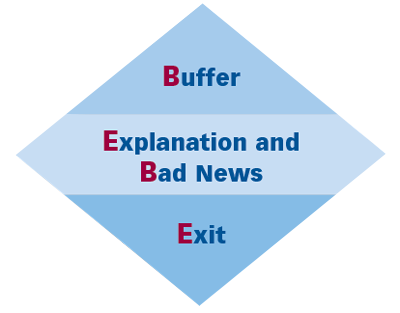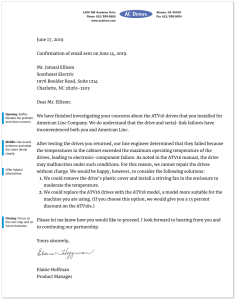12 Delivering Bad News
Delivering bad news is an important skill. Especially if you rise into management, that will be a critical and delicate part of your job. Skilled communicators can protect and maintain a relationship while delivering bad news. Staying positive where possible is best. However, when delivering bad news, sometimes you need negative framing (but only a little bit).
When delivering bad news, you only need to use negative framing once: the moment when you deliver the bad news. The rest of the message can be in positive framing and with good reason. Every message has a certain relationship attached to it. The relationship could be exceptionally weak, as with broadcast advertising for a product you never use. The relationship could be exceptionally strong, as with family. When delivering bad news, you want to protect the relationship as much as possible.
There are a few ways to do this. First, stay positive where you can. Second, look for opportunities to speak to shared values or goals. Third, consider if you can make an alternative offer that could be seen as “softening the blow” of the bad news. As an example, if you need to send a letter notifying a job applicant that they haven’t been hired, you could let them know that their application will be kept on file for future consideration and encourage them to look at future job postings. Yes, you had to deliver bad news, but you can still work on strengthening the relationship, even in that moment—perhaps especially in that moment.
In terms of the structure of a bad news message, there are two general approaches: direct (state the bad new right away) and indirect (soften it by leading up to it with an explanation). If the bad news is minor, or if your reader expects it, go ahead and be direct. But in most cases the second approach is better. This allows your reader to prepare themselves to receive the news and process what they are reading. Being surprised by too direct of a message can come across as tone-deaf, but also cause your reader to be distracted by an emotional response that prevents them from truly comprehending the rest of your message.
To organize a bad news message, use the indirect method (also called the Buffer method, as illustrated in Figure 1):

Figure 1: Buffer method for bad news messages.
OPENING Begin with a buffer: a neutral introduction like thanking the reader for past business, agreeing on a point, or expressing understanding. Indicate the purpose of the letter (but don’t tell the reader the bad news yet). This helps with clarity and eases the reader into the topic gently.
MIDDLE Build up to the bad news.
- Be brief and clear. One good reason is preferable to several weak ones.
- If helpful, explain a company policy.
- Follow with a something that is positive, such as an appreciation, praise, or goodwill.
- Focus on something positive that could still happen in the future, but be sincere in doing this.
CLOSING Express regret (without apologizing) and end politely.
Below are a couple examples of letters expressing bad news using the Buffer Method.
Sample bid rejection letter

Sample claim denial letter

